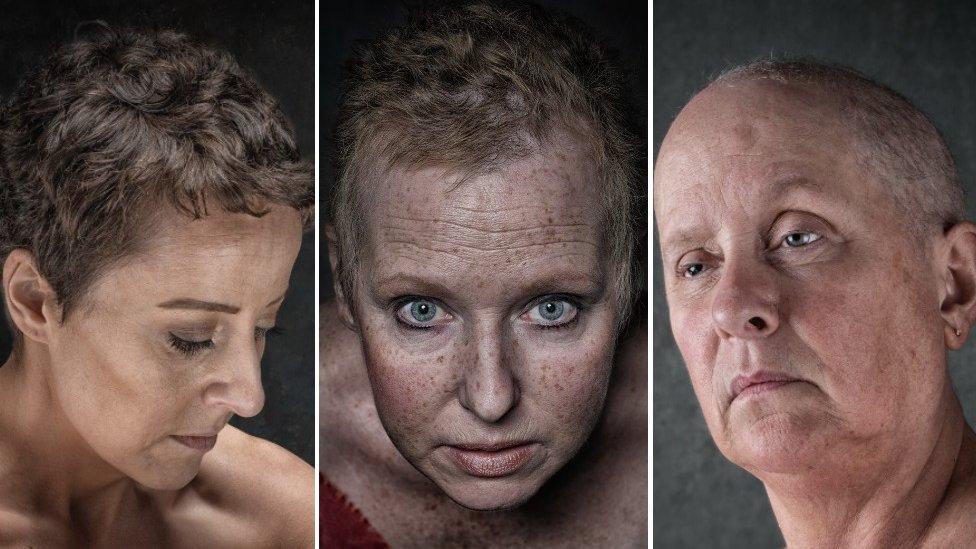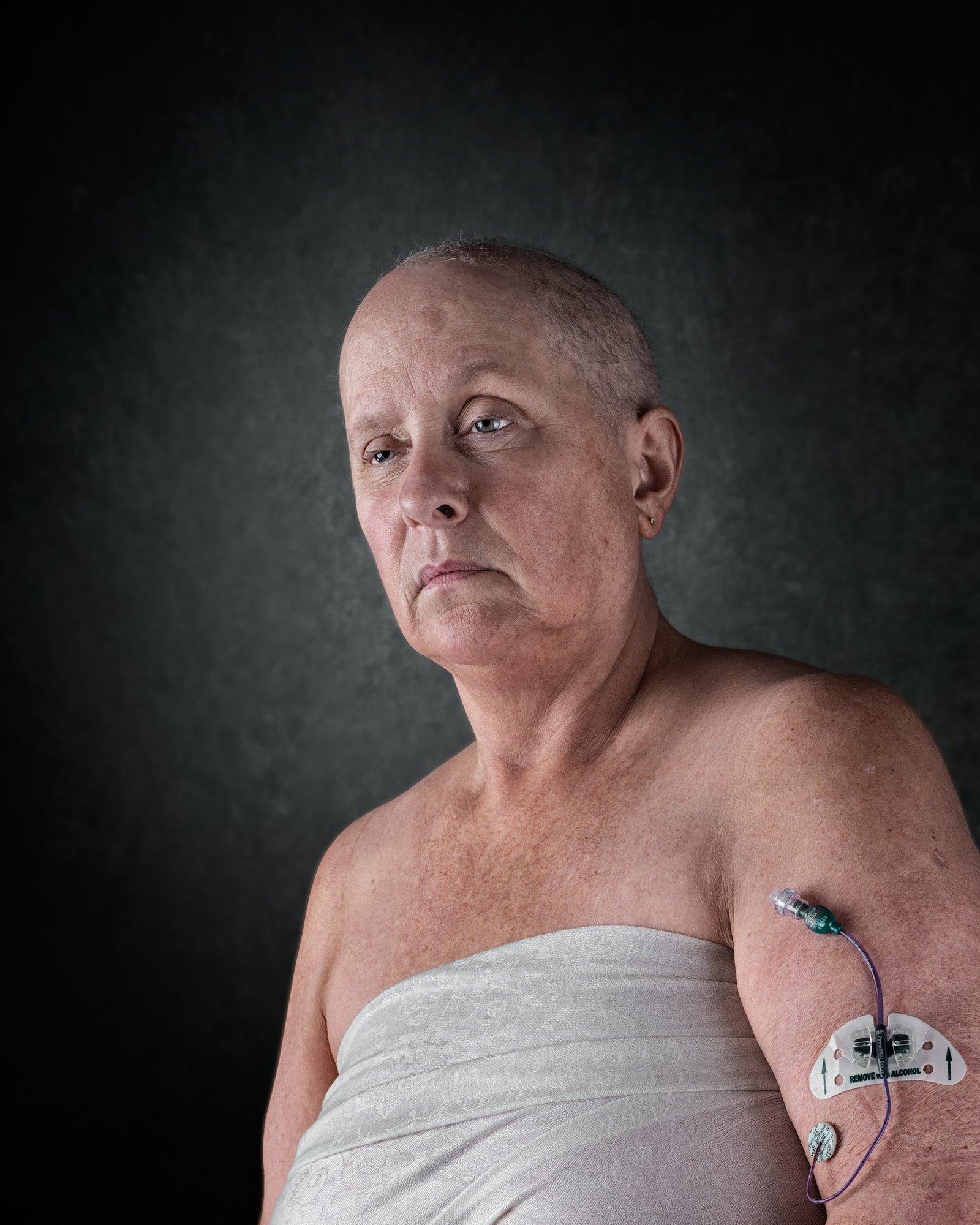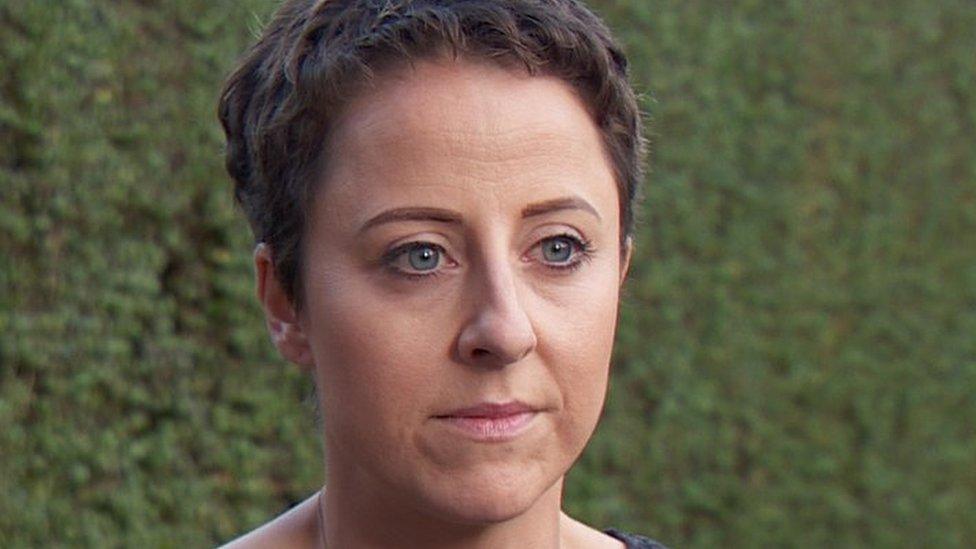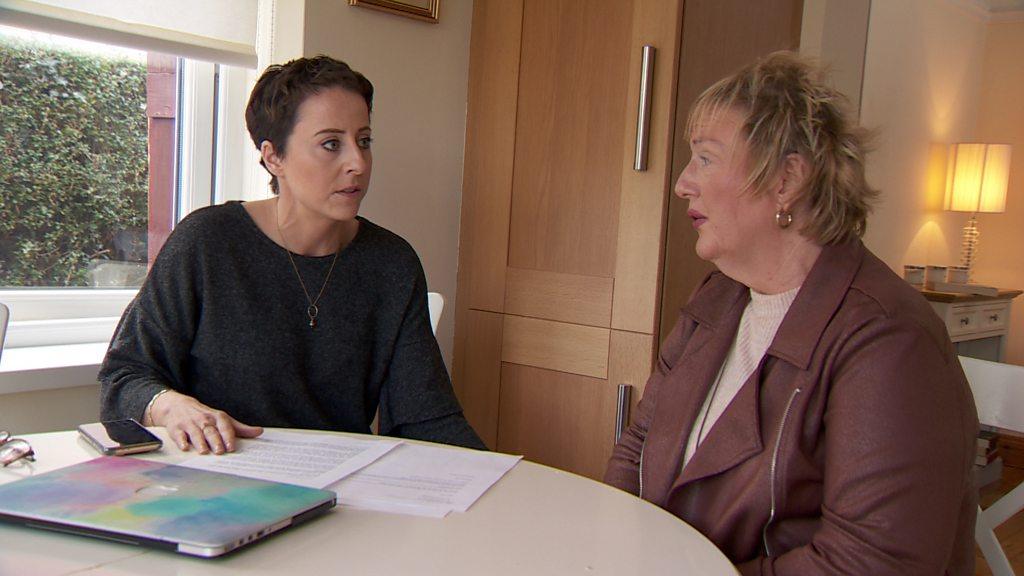Secondary breast cancer: Exhibition captures life with disease
- Published

The portraits see "beyond the pain" of women living with secondary breast cancer
"These women don't become a statistic until they die and that is wrong."
These are the powerful words of photographer Jennifer Willis, who recently captured the portraits of women from Northern Ireland affected by secondary breast cancer.
Through her lens, Jennifer said that "beyond the pain" in some of the women, she also saw a desire to live every moment they have left.
'Please help me prolong my life'
The exhibition Seen To Be Heard will provide a backdrop as the 16-member group present their manifesto to politicians at Stormont.
Speaking to BBC News NI, Jennifer said she feels "privileged" to be supporting these women, "once strangers who've now become friends".
"I wanted my camera to show the physical and emotional impact of the treatment that includes surgery, chemotherapy and radiotherapy," she said.
"Their pain is visible and while others have fully accepted what is happening, others haven't."
The pictures reveal everything that means living with cancer. While haunting, they are also raw, powerful, sensitive and beautiful.
Jennifer told BBC News NI that before bringing the women to her studio she got to know them over a cup of tea or coffee.
"I took my time, this project is so important," she said.
"I wanted to capture what is going on behind their eyes."
Among the women captured is Julie Anne Lillis, who is 38.

Julie Anne Lillis was diagnosed with stage four cancer
In September 2020, during the pandemic, Julie Anne was confirmed as having breast cancer.
Within 10 months of a clear scan2, she had found a lump and was diagnosed with stage four cancer.
Julie Anne had tested positive for the BRCA gene and had been looking into treatment.
Two months later, she was told it had spread. That means Julie became one of the many women here with secondary breast cancer.
The exact number is not known as there has never been an audit - something the women want addressed.
'Hopes and dreams'
According to Jennifer, when photographing Julie she saw "somebody that was angry, also fearful and resentful for having to fight for treatment".
"While appearing to be physically strong she is also totally broken - her portrait captures both," she said.
During their session, Julie told Jennifer that she had two frozen embryos and that she "hopes and dreams to become a mum".
However, Julie told me that she is also realistic and knows that would take "a miracle".
"But I must remain hopeful, without hope I have nothing," Julie said.

Helen McGarvey was diagnosed with secondary breast cancer 10 months ago
Helen McGarvey, 56, has three children.
She was diagnosed with secondary breast cancer 10 months ago. Helen received her secondary diagnosis first - she was unaware of the tumour in her breast until after they had found the tumour on her spine.
"I am on my third course of treatment as the others haven't worked. This one is tough and has left me so tired and sick," she said.
"I was diagnosed at 55. I was active and it took the carpet from under me."
According to the women, those with secondary breast cancer are different from those diagnosed with breast cancer.
Helen explained that breast cancer patients "receive treatment, regular care, check-ups and there is a plan".
"However, a secondary breast cancer diagnosis means there is no cure - we are incurable and often there is no plan."
Helen said she has taken part hoping that politicians and medical people will listen and act.

Cheryl Graham hopes the exhibition resonates with politicians
Cheryl Graham said her portrait was tangible proof that she was still here, "entitled to a life and that those who can make a difference should take notice".
These portraits by Jennifer Willis are emotive; the artist said she hopes they will encourage people to stop and think.
"I offered to help so that it would raise awareness of their situation. I realised at a time when these women need it most, the support they get is almost non-existent," Jennifer said.
"They are on a limited timescale and their diagnosis is not even a statistic in the healthcare system - to be a statistic they have to die."
The portraits will be exhibited in Belfast Exposed on 28 April.
Related topics
- Published16 November 2021

- Published16 November 2021
